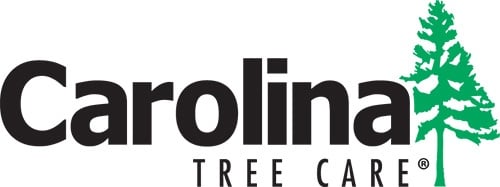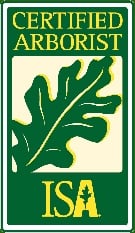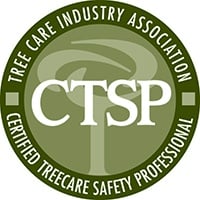Plant these trees and shrubs during autumn to attract more butterflies and hummingbirds
Who doesn't want to watch colorful butterflies and hummingbirds flitter from flower to flower in their yard? Those lovely pollinators can really make a yard or garden come alive, in more ways than one.
If you want to attract more butterflies, hummingbirds, and other pollinators to your yard in Charlotte, NC, we've got the tips and plant recommendations that you need!
As you probably know, pollinators are essential for the reproduction of flowering plants. Pollinators feed on the nectar of flowers and transport pollen as they go.
According to the U.S. Fish & Wildlife Service, pollinators are an important part of the reproductive success of more than 75% of the world's flowering plants — almost just as vital as sunlight, soil, and water.
Plus, pollinators like butterflies and hummingbirds create a lively atmosphere for your yard.
So why are we talking about creating a spring and summertime paradise when the leaves are starting to change colors? Because fall is one of the best times to plant trees and shrubs!
A few tips before we get to the lists:
- Hummingbirds and butterflies like bright, sunny areas.
- Hummingbirds are especially attracted to red, but other brightly colored flowers will work, too.
- If possible, find plants that bloom at different times of the year so pollinators have a steady supply of nectar throughout the growing season.
- Don't use pesticides that can harm butterflies and hummingbirds.
Plant these hummingbird magnets 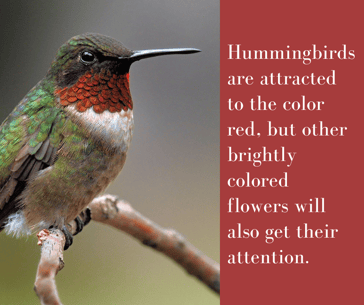
Let's start with a few trees you can plant in your Charlotte, NC yard to provide a haven for hummingbirds:
- Red buckeye tree
- Tubular, red flowers
- Some plant parts are poisonous if ingested
- Yellow-poplar tree
- Fragrant, cup-shaped yellow flowers with red bands near the base and orange centers
- Flowering crabapple tree
- White flowers
- Red fruit
Want to start with some shrubs instead? You'll see more hummingbirds at your Charlotte, NC property if you plant:
- Buttonbushes
- Reddish-brown fruit
- White, fragrant, tubular flowers
- Wild azalea bushes
- Pink or white showy flowers
- Poisonous to cats, dogs, and horses
- Sweet pepperbushes
- Fragrant, cup-shaped pink or white flowers
- Brown capsules
Bring in beautiful butterflies
To make your Charlotte, NC property the ultimate butterfly hangout, you should eventually include a variety of plants to create habitats for every stage of their life cycle. That includes plants where butterflies can lay eggs, plants that can serve as food for caterpillars, standing plants where caterpillars can go to create their chrysalises, and plants that produce flowers that will provide nectar for adult butterflies.
These trees make great host plants for caterpillars:
- Black cherry tree
- Bitter fruit that you can use to make jams and jellies
- Pink or white flowers
- Elm tree
- Vibrant green leaves throughout the summer and yellow leaves in the fall
- Pawpaw tree
- Fruit that tastes sort of like a banana but with hints of mango, vanilla, and citrus
- Yellow-poplar tree
- Fragrant, cup-shaped yellow, green, or orange flowers
Choose these trees to ensure adult butterflies have plenty of delicious nectar:
- Sweetbay magnolia tree
- Creamy white flowers that have a light, lemony scent
- Eastern redbud tree
- Pink blossoms that are some of the first blooms you'll see in the spring
- Flowering dogwood tree
- Red, white, or pink blooms in the spring
- Red fruit in the fall
Butterflies also love fluttering in buttonbush, dwarf huckleberry, sweet pepperbush, and wild azalea bushes.
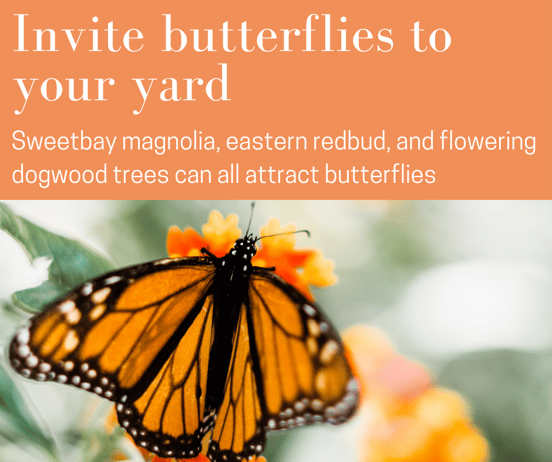
Your trees and bushes may need some extra care to thrive and attract pollinators for years to come. If at any point you're worried about your trees or bushes, feel free to give us a call!
Our plant health care specialist can identify issues and recommend the best treatments.
Need some tips on how to plant a tree correctly? Check out this blog post next: D.I.Y. — Replant a Tree or Shrub in 3 Easy Steps.
